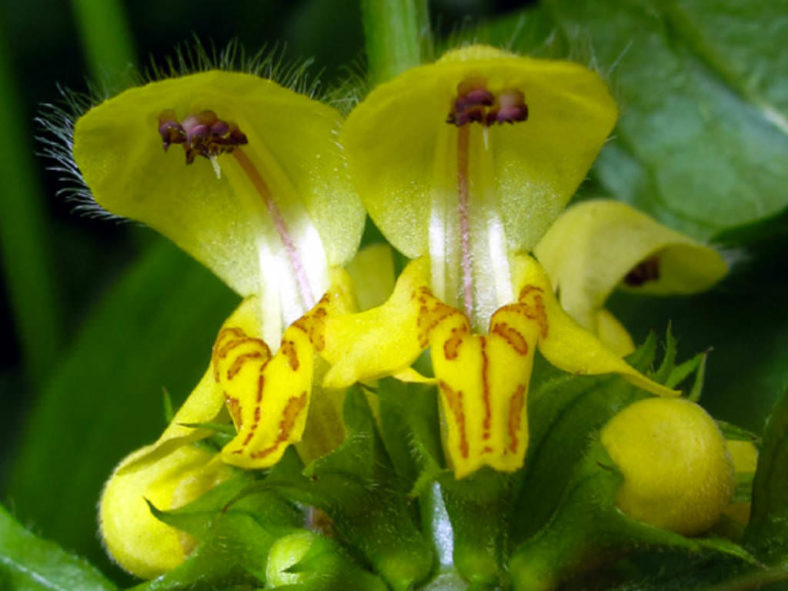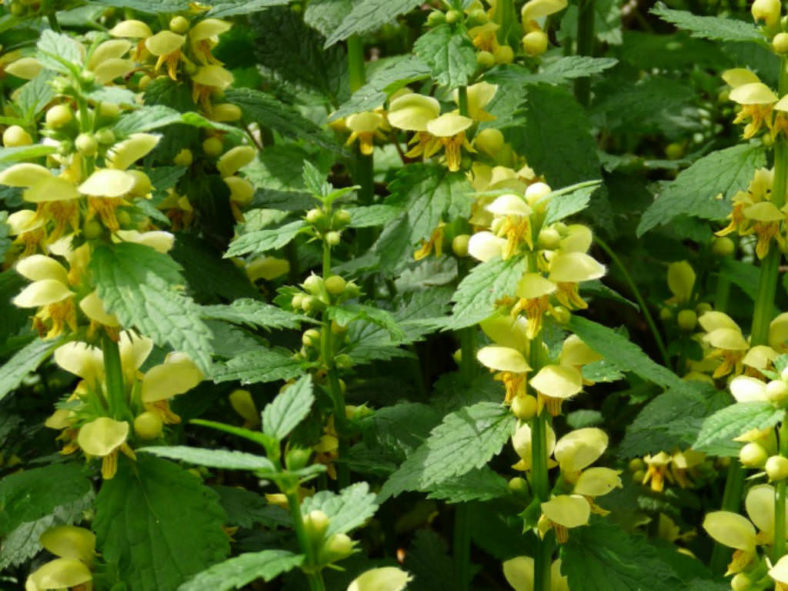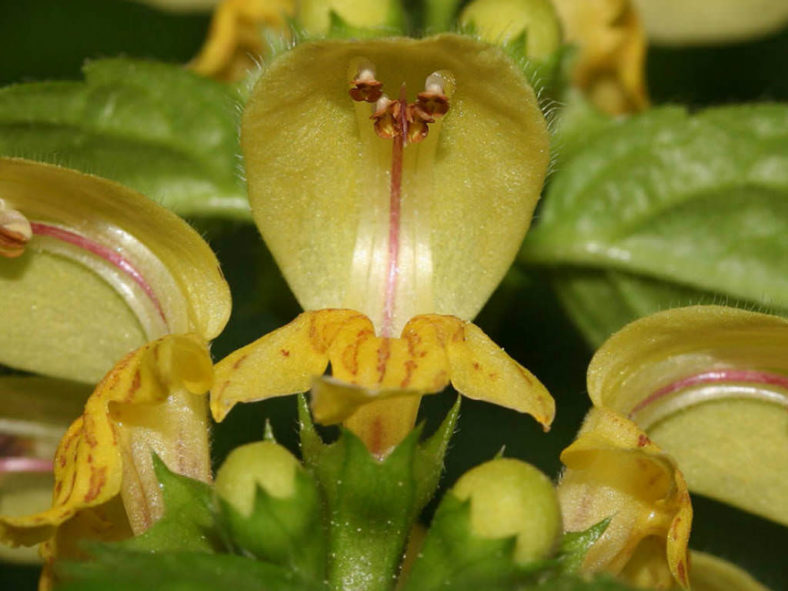Scientific Name
Lamium galeobdolon (L.) L.
Common Names
Yellow Archangel, Artillery Plant, Aluminium Plant
Synonyms
Galeopsis galeobdolon, Galeobdolon luteum, Lamiastrum galeobdolon
Scientific Classification
Family: Lamiaceae
Subfamily: Lamioideae
Tribe: Echinocereeae
Genus: Lamium
Origin
Lamium galeobdolon is native to Europe and western Asia.
Flower
Color: Yellow
Bloom Time: Mid-spring to early summer
Description
Lamium galeobdolon is a large-leaved perennial plant with stalked, broadly ovate leaves with a cordate base and toothed margin. It grows up to 31 inches (80 cm) tall. The leaves grow in pairs from opposite sides. The underside of the leaves is often purplish.
The small, two-lipped, yellow flowers, often streaked with orange, appear in whorls on axillary, up to 0.8 inches (2 cm) long stalks in late spring.

How to Grow and Care
Lamium is undemanding and easy to grow in partial to fully shaded locations. It prefers well-drained soil but will do fine in the dry shade if you provide it with regular watering. A member of the mint family, Lamium spreads quickly, is self-seeding, and will rapidly create a ground cover wherever it is planted. Its brittle, fragile stems help keep it from becoming aggressively invasive and allow bulbs and other perennials to penetrate its foliage.
In regions with cold winters, Lamium is deciduous. In milder climates, it is semi-evergreen. In either case, cut back shabby foliage after the first frost to make way for new spring growth. In midsummer, after the blooming period is over, prune plants back by one-third to help prevent them from becoming too invasive. The midsummer shearing also encourages a second blooming period in September. Not terribly picky, spotted Dead Nettles do just fine in average, well-drained soil. There is no need to apply fertilizer, which can encourage them to become too robust and invasive.
See more at How to Grow and Care for Lamium.
Links
- Back to genus Lamium
- Plantpedia: Browse flowering plants by Scientific Name, Common Name, Genus, Family, USDA Hardiness Zone, or Origin
Photo Gallery
Click on a photo to see a larger version.




